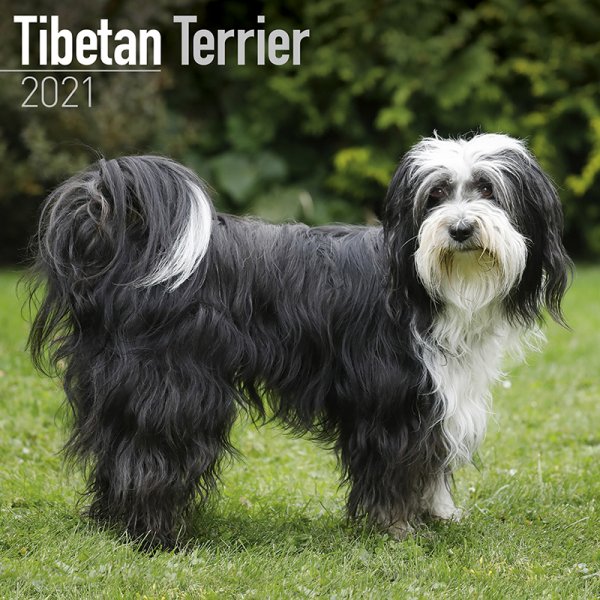Tibetan terrier
As the name suggests, Tibetan terriers are native to the Tibet region of China. There, these dogs served in monasteries as guard animals, while accompanying the monks and guiding their flocks. Due to its remote origins and the isolation of the original area, the breed has remained virtually unchanged over the years, being one of the best preserved today.
- Its origins date back more than 2000 years and it is said that they arose when the Tibetans decided to separate the large dogs.
- From which descend the current Tibetan mastiffs.
- And the young.
- That is.
- The Tibetan terrier that are precursors of breeds such as the Tibetan spaniel.
- Or the shepherd of the Polish plains.
The breed arrived in Europe in the 1920s, through a doctor named Agnes Gray, who treated the natives who had as a pet the Tibetan Terrier and, after receiving his medical attention, introduced him to one of the puppies who had raised his puppy. This puppy was part of a breeding program and then traveled with its owner to England in 1922. In 1930, the breed was officially recognized by the Kennel Club of England (KCE), and its expansion throughout Europe became particularly notable in the 1940s. The breed came to the United States in 1956 and was recognized by the American Kennel Club in 1973.
Formerly known as Tsang Apso, “a furry dog from Tsang Province”, this dog was called Terrier because foreign travelers found it very similar to the burrows known in Europe, so they called it Tibetan Terrier. The other names are Tibet Apso or Dokhi Apso.
Tibetan burrows are medium-sized dogs, weighing between 8 and 12 kg and a height of between 35 and 45 centimeters, with females being slightly smaller than males. Their life expectancy usually ranges from 12 to 15 years, reaching some specimens at 17 years.
Its body is solid and compact, with square shapes. Its head is also square, aligned with the snout and showing a stop. A notable feature of the standards of the breed is that the distance between the nose and the eyes should be the same as between the eyes and the base of the head. These eyes are round, large and expressive, dark brown and lighter shades are also accepted if the fur is very light in color. The ears of Tibetan terriers have “V-shaped” stripes and hang on the sides of the skull.
Its fur is dense because it has a double layer, and the outer layer is long and straight, while the inner layer is thinner and woolly, making it an insulator against the climatic conditions typical of its region of origin. The colors of your fur can cover the full spectrum of colors, except for chocolate and liver.
Although it belongs to the Terrier category, the Tibetan Terrier differs from its counterparts in that it has a much softer and docile personality. He likes to play and spend time with his loved ones, although he distrusts strangers. If you’re going to live with children, it’s important that you both get used to living and interacting with respect. That’s why you need to educate your Terrier from childhood and make sure that your socialization is complete and satisfying.
They are tenacious and very brave dogs and, if the situation requires it, they are undisputed heroes. Many of them act as therapy dogs, collaborating in sessions for different groups, such as children, the elderly or people in need of care.
They are sociable animals that do not tolerate loneliness well, because they need constant care and attention. If the Tibetan Terrier has these things, you will have no trouble living in an apartment and whenever you can release your energy with long walks, you will have a playful, cheerful and balanced animal to enjoy great moments.
Being a breed that has a long and dense coat, the Tibetan Terrier will need your attention, since it is necessary to brush your fur frequently to keep it soft and shiny, avoiding tangles and knots. It is recommended that the Terrier take at least one bath per month to keep it clean and tidy. As they have a significant amount of hair on the inner face of the ears, it is necessary to always be attentive and, if necessary, cut the hair in this area, since complications may occur by knots or accumulation of dust and moisture.
Except for this brushing, the Tibetan Terrier will need the same care as any other breed, such as brushing your teeth several times a week, giving you enough time for physical activity, cutting your nails regularly and cleaning your ears with suitable optical products. for use in dogs.
It is important to choose a balanced diet adapted to the needs of both the breed in general, that is, a dog with medium and long hair, and of your pet in particular, adapting the diet to your specific nutritional needs. If, for example, your pet has kidney or liver failure, or if you have heart problems, it is possible to find on the market rations and products that respond to these vitamin deficiencies and have the most appropriate levels of minerals, proteins, fats. carbohydrates. to improve or maintain your health.
In general, Tibetan terriers are animals easy to educate, but you should be consistent and dedicated when it comes to your training, as they are stubborn dogs and sometimes you need enough energy and patience to train. effective and satisfying.
One of the most relevant aspects of the formation of this breed is socialization, which must be carried out as soon as possible, otherwise the dog may encounter difficulties when living with people and other animals. This happens because of your suspicious character and your guardian dog skills, but if you follow the guidelines, you are patient and consistent, you will definitely achieve your goals since we are faced with a friendly breed with surprising adaptability.
In general, it can be said that the Tibetan Terrier is an enviable breed of health, however, these dogs may present some inherited diseases such as hip dysplasia, which requires constant veterinary monitoring, performing the necessary radiological examinations and providing supplements. chondroprotectors, which will help keep joints in good condition.
In turn, the breed is prone to develop progressive retinal atrophy and retinal dysplasia, diseases that can cause problems as serious as blindness. We also highlight cataracts and eye dislocations as common diseases in the breed.
That is why it is necessary to go to regular veterinary consultations every six or twelve months. It is also essential to identify the Tibetan terrier with fleas and plaques, as well as to follow the vaccination schedule and deworming routine. In this way, it is possible to prevent and detect various diseases quickly.

